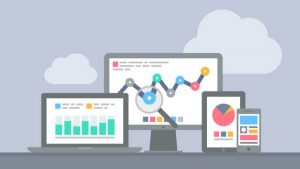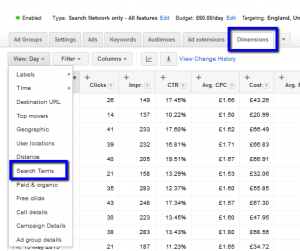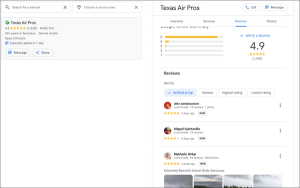Generative AI for business observability: What IT leaders need to know
The way generative AI is supercharging productivity—all thanks to its ability to generate answers based on mountains of data, fast—will revolutionize how we do business.
We all know that data is at the heart of business operations. Optimal performance depends on your ability to respond to new data and action your existing, proprietary data. But as IT leaders, we also know that our data volumes have continued to explode during the past few years with no real signs of slowing down. So much so, that within the few seconds it took you to read this paragraph, approximately 50 thousand terabytes of data were created.
Where there is data, there must be search, and for business observability, there is the need for capabilities to find the data that predicts and mitigates operational risks efficiently for us to best manage our environments in today’s modern, distributed environments. But even that isn’t enough.
Enter generative AI. The transformative technology of the century, generative AI is supercharging productivity—all thanks to its ability to generate answers based on mountains of data, fast.
Built on natural language processing (NLP), machine learning (ML), and large language models (LLMs), generative AI enables us to quickly get answers from data. And by applying generative AI with search technology, it allows us to incorporate and gain context from our proprietary data, providing us results that are based on information that’s specific to our organizations.
By democratizing access to domain knowledge and helping businesses integrate proprietary data, generative AI and search are the ultimate tools for improving operational resilience and combining our data with business metrics to get a holistic view of organizational health.
But let’s not stop there. The magic of generative AI and search lies in its ability to use both public and proprietary data—making its superhuman generative capabilities relevant and accessible, and allowing us, as stewards of this information, to more quickly understand a situation in our organization with both context and knowledge of external factors.
AI-DRIVEN BUSINESS OBSERVABILITY: ORGANIZATIONAL IMPACTS
Observability gives businesses visibility into their operations. AI-driven business observability goes a step further to offer deeper insights into operational processes, customer behavior, and market trends. LLMs help operationalize generative AI by broadening our access to business intelligence while creating a larger context for our data. The result is a more detailed picture of our business and the ability to ask questions about our data.
AI-driven business observability enables companies to:
Gain a holistic view of operational processes: AI-driven business observability gives organizations the ability to break down traditional monitoring silos. By correlating disparate data and setting up automation, businesses can make informed decisions that address issues as they occur—and before they occur. Seeing unknown unknowns enables teams to take a proactive approach to their operations management. As a result, operational resilience improves, and productivity increases.
Incorporate customer behavior data: The ability to correlate customer behavior data with operational data offers organizations a nuanced and richer perspective of their customer experience. What is affecting customer behavior? Are there recent changes that result in certain behavioral trends? Even with large volumes of customer data, we can ask specific questions and act quickly to improve customer experiences.
Keep an eye on market trends: AI can correlate operational and business data with market trends and data, helping us take a proactive stance on competitive differentiation. By understanding the fluctuations in the market and our competition, we can analyze data for patterns and even predict market trends.
Combining operational, customer, and market data, we can obtain a holistic view of our operations to guide informed and proactive decision-making.
REAL-WORLD USE CASES OF BUSINESS OBSERVABILITY AND GENERATIVE AI
Different industries can benefit from generative AI-enhanced business observability. When search capabilities are boosted by generative AI, organizations can access knowledge quickly—and in natural language.

- Explain x: Not a domain expert, but need domain-specific knowledge to move ahead with a time-sensitive and business-critical step? No problem. A generative AI function using retrieval augmented generation (RAG) enables business users to gather the insights they need when they need them. Business and IT users alike can have a function, log, or trace explained to them to get more information about their data.
Industry example: To improve employee productivity, an automotive and manufacturing organization can look to generative AI for predictive maintenance. A generative AI-powered application can help predict and summarize maintenance and system issues so employees can proactively resolve them. They can reduce the time spent on identifying the issue and spend more time on resolving the problem with the next best action suggested. This can help improve operational efficiency and decision-making—all while reducing any labor costs associated with system incidents and downtime.
- Synthesize information: Time-consuming activities limit productivity. From manual data correlation and analysis to reviewing lengthy documents in search of an answer, generative AI-enhanced reports help save time and resources. A generative AI assistant can synthesize the information into an actionable report. It makes combining data sources and comparing that data much easier.
Industry example: A financial services organization could use NLP-based information retrieval and summarization with a virtual assistant to help synthesize vast amounts of information. For instance, if there’s a sudden increase in activity, fraud analysts could use a generative AI-powered assistant to detect and summarize fraudulent transactions. When used within the fraud space, analysts can interact with a fraud alert to understand what is going on and identify the next best action. Not only does this help improve the accuracy and speed of fraud detection and reduce financial loss, it can also reduce labor costs by automating manual tasks such as fraud reporting.
- Improve efficiency: Efficiency equals productivity. If an organization has issues with code eating up a lot of CPU, its teams can ask their generative AI tool to optimize their code to improve resource usage. This could decrease load times and user frustration. It also trickles down to IT productivity; getting relevant answers fast means a shorter time to resolution and more time to focus on development.
Industry example: A telecommunications organization can provide various network configurations and predict their performance under different conditions. This can help optimize network layouts, balance loads more effectively, and improve efficiency, all while comparing operational performance with key business metrics. As a result, the organization can ensure that operational decisions are positively impacting the bottom line.
Discover how to put generative AI to work at your organization.
GENERATIVE AI IN BUSINESS VULNERABILITY: WHAT’S NEXT
Businesses can and should expect the role of generative AI in improving operations to continue to expand. The most important challenge to consider however is hallucinations. Public LLMs alone will not suffice in addressing operational challenges. To get the best results from generative AI, you need a system that incorporates both public information and your proprietary data. To best enable effective and relevant results, and get ahead of your competition, I recommend that any AI assistant should be enhanced by a vector database, semantic search, and RAG.
Ultimately, the first step to achieving business observability is a gradual rollout of your generative AI tools. Then, the possibilities get even more exciting: equipping every employee with their own AI assistant, auto-diagnosis, and auto-remediation are within reach.
AI assistants can help SREs through a language-driven interface, enabling a dynamic, single-pane-of-glass view that provides relevant signal dashboards in one place. AI will be able to connect to business data and operational data, correlate, and diagnose the level of the problem: Is it business critical? Who is affected? Is revenue impacted? Getting those answers— quickly—will revolutionize how we do business.
Learn more about building generative AI apps for your organization.
Matt Minetola is chief information officer at Elastic.
(17)
Report Post





